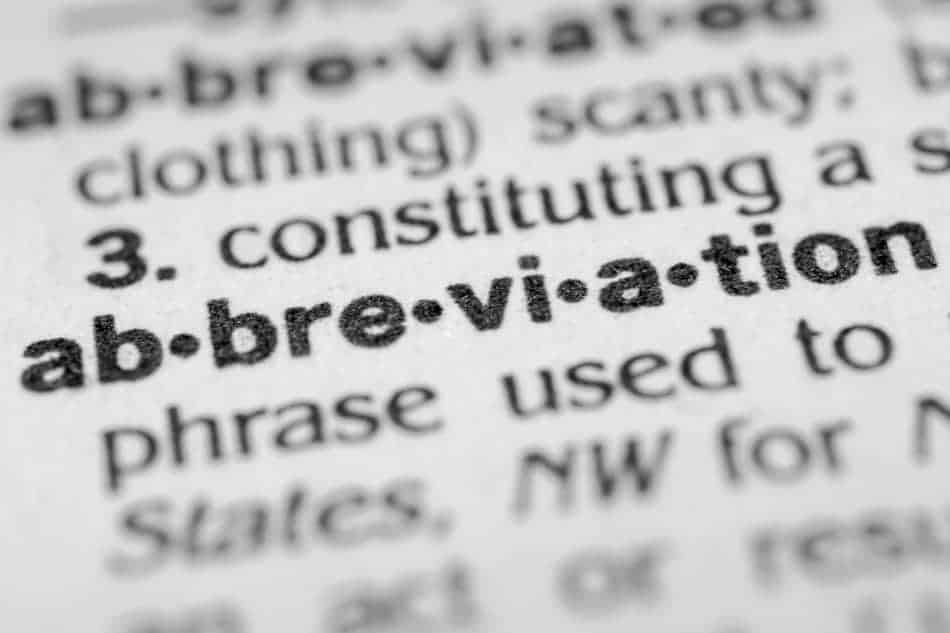
Table of Contents (Guide To Publication)
Part II: Preparing, Presenting and Polishing Your Work – Chapter 4
4. Journal Guidelines and Formal Scholarly English
Although many aspects of an academic or scientific article can contribute to readers’ misunderstanding or misinterpreting your work, your writing style and the accuracy of the language you use are of paramount importance to successful communication. All scholarly journals publishing articles in the English language will want (and the guidelines provided by most of them will specify the need for) articles written in English that is both clear and correct. Many will recommend using a professional proofreader who is proficient in the English language, especially if you are not a native English speaker. Before sending your work to a proofreader, however, you will need to do everything you possibly can to make your language and style as clear, correct, precise and consistent as possible because even a talented and experienced proofreader will only be able to help you communicate effectively if you do so well enough that he or she can get a good idea of what you’re trying to say. The use of excellent English will in any case benefit both you and your article as you work through all the stages of publication, from emailing editors to proofreading the final copyedited version of your paper.
4.1 British versus American English
The guidelines of some journals will indicate specific requirements regarding language and it’s essential that your writing style follows these instructions carefully. The most common specification among many English journals is the use of either British or American English, and even those journals that allow both kinds will not want to see a mixture of British and American spellings in the same paper. Differences between the two forms of English include ‘ou’ in British versus ‘o’ in American (British: ‘colour’ and ‘behaviour’; American: ‘color’ and ‘behavior’), ‘re’ in British versus ‘er’ in American (British: ‘theatre’; American: ‘theater’), doubling of consonants in British versus single consonants in American (British: ‘modelling’ and ‘focussed’; American: ‘modeling’ and ‘focused’) and ‘–ise’ endings in British versus ‘–ize’ endings in American (British: ‘analyse’ and ‘recognising’; American: ‘analyze’ and ‘recognizing’). The last of these differences is no longer observed as strictly as it once was, and ‘–ize’ endings are now acceptable in British English as well, at least as far as some journals and publishers are concerned. There are other differences as well (e.g., oe in British vs. e in American: ‘manoeuvre’ vs. ‘maneuver’) and certain inconsistencies that can be unpredictable (‘parameter’ and ‘compromise,’ for example, are the same in both British and American), but the spell check function of Word can help if you set the language as UK or US English. The programme won’t do it all for you, however, and do be aware that it’s not always reliable, but many dictionaries will provide alternate spellings, so if you’re unsure about a word, take the time to look it up.
4.2 Understanding Abbreviations
The guidelines provided by most journals will have something to say about the use of abbreviations. Some frown upon them and ask authors to keep their use to a bare minimum or to use only standard abbreviations for measures. Others will expect you to use abbreviations, but give very specific instructions about how they should be introduced, defined, used with consistency and provided in an alphabetical list as well as in the text. If the journal to which you’re submitting your paper offers such specific instructions, follow them carefully, but even if the guidelines say virtually nothing about using abbreviations, there are useful and effective ways of using abbreviations that should be observed in all cases for two important reasons: to maintain conventional professional standards and to ensure that your readers will understand your abbreviations and thus what you are saying about the terms and concepts you abbreviate.
Standard abbreviations of measures can be found in a number of places, such as the American Psychological Association (APA) and other style manuals and many dictionaries, and generally do not need to be defined in your paper. So the important point with such abbreviations is to use the appropriate format for each and use it in the exact same format each and every time the abbreviation is used: ‘ms’ for millisecond, for example, not ‘ms’ in one instance and ‘msec’ in the next; ‘kph’ and ‘mph,’ not ‘km/hr’ and ‘mph.’ The same is the case with common Latin abbreviations such as ‘etc.,’ ‘e.g.,’ ‘i.e.,’ ‘cf.,’ ‘vs.’ and ‘viz.’ If you’re going to use them, do so with complete consistency. Technically speaking, none of these Latin abbreviations needs to be in italics and the full stops should appear where I’ve placed them here, but some guidelines will vary this slightly by using italics or eliminating the full stops, so it’s always worth checking. As a general rule of good style, these Latin abbreviations should be used only in parenthetical material (i.e., inside parentheses): main sentences that use ‘e.g.,’ ‘i.e.’ and ‘cf.’ often become incomprehensible, especially if the writer isn’t entirely sure exactly what the abbreviations mean (‘cf.,’ for instance, which is misused more often than not, means ‘compare,’ not ‘see’). So write out exactly what you mean in your main sentences, and when you do use these Latin abbreviations parenthetically, be sure you know what they mean and use them correctly.
The Latin abbreviations ‘et al.,’ ‘ibid.,’ ‘loc. cit.’ and ‘op. cit.’ are generally used in the context of reference lists, footnotes, endnotes and citations. The last two – ‘loc. cit.’ and ‘op. cit.’ – tended to be confusing even when they were widely used, and thankfully have been virtually abandoned in modern scholarship, so you’re most likely to find guidelines warning against their use than instructing authors on how to use them: certainly, they’re best avoided. ‘Ibid.,’ on the other hand, is still used in footnote and endnote references in the humanities. It abbreviates ‘ibidem,’ which means ‘in the same place’ or ‘in that very place,’ so is used instead of repeating bibliographical information when a source is cited immediately after it has been cited in the preceding note (or sentence within a note). Because it means ‘in that very place,’ it must be used with great care: only if everything about the second citation is exactly the same as the first can it be used alone. For example, if the reference in footnote 1 is ‘Smith, Amadeus, p. 4’ and you need to cite the same author, book and page number in footnote 2, then ‘ibid.’ can be used alone, but if you’re citing the same author and book in footnote 2 with a different page number, then the page number should be added: ‘ibid., p. 7.’ Never use ‘ibid.’ if its meaning is potentially unclear: if, for instance, you’ve cited two sources in footnote 1 and you use ‘ibid.’ in footnote 2, your readers will not be able to tell which source you mean by ‘ibid.’ In such cases more detail must be provided – ‘Smith, ibid.,’ for example – or the use of ‘ibid.’ should be avoided altogether.
The meaning of ‘idem’ and ‘eadem’ is similar, so although they’re not abbreviations, they should be considered along with these referencing abbreviations. They both mean ‘the same,’ with ‘idem’ being the masculine form and ‘eadem’ the feminine, and although they tend to appear in English dictionaries (especially ‘idem’) so don’t need to be in italic font, they are often italicised. They are used predominantly in footnotes and endnotes when an author who has just been cited is immediately cited a second time. For example, if you’ve just cited ‘Smith, Amadeus, p. 4’ and you’re now citing ‘Smith, Beethoven, p. 8,’ you can use ‘idem, Beethoven, p. 8’ if Smith is a man or ‘eadem, Beethoven, p. 8’ if Smith is a woman. As with ‘ibid.,’ however, these Latin terms need to be used only when it’s absolutely clear which author is being cited, and if there is any potential for confusion, don’t use them. Since many journals don’t encourage the use of such Latin shortcuts, it’s also a good idea to check the journal guidelines and only use them if their use is specified as acceptable.
The Latin abbreviation ‘et al.’ is used in virtually all academic and scientific journals when referring to authors of a multi-author work. It abbreviates ‘et alii’ (masculine), ‘et aliae’ (feminine) or ‘et alia’ (neuter, although this meaning isn’t really relevant for authors, who are necessarily men or women rather than objects without gender). All of these Latin terms mean ‘and the others’ and because ‘et’ is the complete Latin word for ‘and,’ a full stop should never follow the ‘et’ part. A full stop should follow ‘al.,’ however, but do check the journal guidelines or style manual you’re following because some will call for ‘et al’ without the final full stop and some will require the use of italics on the abbreviation. Generally speaking, ‘et al.’ is the only one of these Latin abbreviations that can be used in the main text of formal academic or scientific prose as well as in parenthetical material: ‘Jackson et al. (2013) argued that…’ or ‘In this study (Jackson et al, 2013) it is argued that….’ (on the use of ‘et al.,’ see also Section 5.2.1).
The most notorious of abbreviations is the acronym, an abbreviation made up of the first letters of all the words or only the main words in a name or term: WHO for the World Health Organization is a well-known example. With the exception of a few acronyms that are better known than the terms they abbreviate – IQ and AIDS, for instance – each acronym you use in your paper should be formally introduced by presenting the full version of the term or name along with the abbreviated version (in parentheses) before the acronym is ever used on its own: ‘the World Health Organization (WHO) reported….’ Make sure that you position the abbreviated form to represent accurately exactly what the acronym abbreviates – ‘the critical time gap (CTG) test revealed…,’ not ‘the critical time gap test (CTG) revealed…’ – and that your subsequent use of the acronym reflects that placement (CTG meaning ‘critical time gap’ but not ‘test’ as well). If you use an acronym for a corporate author in an in-text citation (WHO, 2012), you can simply introduce the full term and acronym in reverse order in the reference list: WHO (World Health Organization) instead of World Health Organization (WHO). This ensures that your reader will be able to find the reference easily in your list, but also provides complete bibliographical information. If you do not follow these simple procedures when using acronyms, your reader may not know what you’re talking about – a frustrating experience for both author and reader. Once an acronym has been introduced in this manner, however, you can use it with confidence knowing that you’ll be understood, so long as you use it accurately and consistently. Many journals will ask that an acronym be used in all cases instead of the full term once it’s been introduced, and that acronyms not be introduced and used at all unless they’re used with considerable frequency.
There are a number of other concerns that you should also consider when using acronyms and other abbreviations. For instance, sometimes a plural term such as United Nations is abbreviated with an acronym that doesn’t show the plural nature of the full version (UN), but if you’re going to use an abbreviation for both singular and plural forms of a term, add an ‘s’ when you intend the plural of the original – KI for ‘key informant’ but KIs for ‘key informants.’ In such cases, make sure that you use the appropriate form (singular or plural) when you introduce and define the abbreviation – ‘My key informants (KIs) were…,’ not ‘My key informants (KI) were…’ – and that the language you use around the acronym when it’s used alone reflects the difference: ‘My KIs were…,’ not ‘My KIs was…’ (the use of that ‘s’ will help with this). Generally speaking, abbreviations of all kinds should be avoided in the headings and subheadings of your paper, even if they’ve already been introduced and defined, and some journals will ask that they be avoided in the abstract of a paper as well. If you do have to use abbreviations in your abstract, defining them there does not mean you can avoid doing so in the main paper – they will need to be introduced and defined in both places (on the use of abbreviations and acronyms in the tables, figures, title, abstract and keywords of an academic or scientific paper, see Sections 5.1 & 6.2 below).
This article is part of a book called Guide to Academic and Scientific Publication: How To Get Your Writing Published in Scholarly Journals. It provides practical advice on planning, preparing and submitting articles for publication in scholarly journals.
Whether you are looking for information on designing an academic or scientific article, constructing a scholarly argument, targeting the right journal, following journal guidelines with precision, providing accurate and complete references, writing correct and elegant scholarly English, communicating with journal editors or revising your paper in light of that communication, you will find guidance, tips and examples in this manual.
This book is focusing on sound scholarly principles and practices as well as the expectations and requirements of academic and scientific journals, this guide is suitable for use in a wide variety of disciplines, including Economics, Engineering, the Humanities, Law, Management, Mathematics, Medicine and the Social, Physical and Biological Sciences .
Table of Contents (Guide To Publication)
You might be interested in Services offered by Proof-Reading-Service.com
Journal Editing
Journal article editing services
PhD Thesis Editing
PhD thesis editing services
Expert Editing
Expert editing for all papers
Medical Editing
Medical Editing Services
Research Editing
Research paper editing services
Book Editing
Professional book editing services






